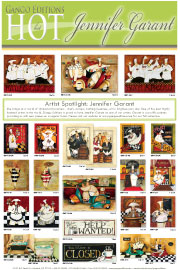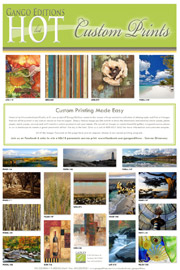Get to Know Vitaly Geyman
 Born in the Ukraine, Vitaly spent the first twelve years of his life in Kiev, a colorful and culturally rich city replete with old cathedrals and large oak trees. He was a sensitive and highly imaginative child, seeing the world as a series of moving images. He later lived in Italy and Australia before making his way to Oregon, where he now resides. Vitaly received an MBA from Monash University in Australia. He also trained as an actor and a life coach. His photography comes from a multidisciplinary perspective and conveys his intimate connection with the beauty of nature.
Born in the Ukraine, Vitaly spent the first twelve years of his life in Kiev, a colorful and culturally rich city replete with old cathedrals and large oak trees. He was a sensitive and highly imaginative child, seeing the world as a series of moving images. He later lived in Italy and Australia before making his way to Oregon, where he now resides. Vitaly received an MBA from Monash University in Australia. He also trained as an actor and a life coach. His photography comes from a multidisciplinary perspective and conveys his intimate connection with the beauty of nature.
Q. What do you see as the central appeal to your artwork? What do you see in your artwork that your fans might see as well?
A. My appeal comes from understanding what makes a good composition. A composition must have a point of focus and relationship between the objects. It must bring out emotion and in my case I often go for serenity, simplicity and Zen. Something that people will look at for a long time and keep seeing more and more in it, something that moves and inspires them.
I take a lot of photographs but only a very small percentage makes it through my own critique. Then I spend many hours working on them in Photoshop, enhancing the key features, hand painting, applying textures, all to create the result I want.
Q. How did you get on the path to becoming a professional artist? What has led to your success?
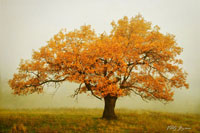 A. I was originally trained as a business coach. My art career as a photographer began when I met David Lorenz Winston who is a top selling poster artist, known for his work called “Solitude”. David was a friend and one day he was taking some experimental photographs. I started having all these ideas and was suggesting to him different strategies. In retrospective this is really funny, me telling one of the most experienced photographers what to do. However David was very patient with me and delicately pointed out that instead of telling him I should start experimenting with photography myself. Since then I have taken over ten thousand images and my work has been featured is some top fine art photography journals like Silvershotz (see article here) and licensed to some large manufacturers and design firms.
A. I was originally trained as a business coach. My art career as a photographer began when I met David Lorenz Winston who is a top selling poster artist, known for his work called “Solitude”. David was a friend and one day he was taking some experimental photographs. I started having all these ideas and was suggesting to him different strategies. In retrospective this is really funny, me telling one of the most experienced photographers what to do. However David was very patient with me and delicately pointed out that instead of telling him I should start experimenting with photography myself. Since then I have taken over ten thousand images and my work has been featured is some top fine art photography journals like Silvershotz (see article here) and licensed to some large manufacturers and design firms.
I think the secret for my success is a keen eye for composition and relentless pursuit for beauty and perfection and most of all my sensitivity to the subject at hand. Having a business background also helps me to be more professional than the average artist, producing a variety of work that has commercial value.
My other key success factors are the mentors and colleagues who constantly inspire and challenge me to be the best in my field.
Q. Sometimes art can be a passion and sometimes it can be a labor. Has a favorite image failed to meet commercial success? Do you have a secret favorite in our collection that you simply love, no matter if anyone buys it?
 A. Sure there is always a difference between decorative art and what one may call experimental art. There are many of my images that may never make it to the stores but to be true to myself as an artist I have to engage in that process because it feeds my creative self. The reality is that some images may take years to be discovered by the public but that does not lessen their value. As an artist I am always torn between producing a commercial product that may please a large percentage of the population versus doing whatever pleases me irrespective of whether it has any commercial value. In truth one needs to pursue both of these paths, some images dedicated to please the public and others for pure artistic inspiration.
A. Sure there is always a difference between decorative art and what one may call experimental art. There are many of my images that may never make it to the stores but to be true to myself as an artist I have to engage in that process because it feeds my creative self. The reality is that some images may take years to be discovered by the public but that does not lessen their value. As an artist I am always torn between producing a commercial product that may please a large percentage of the population versus doing whatever pleases me irrespective of whether it has any commercial value. In truth one needs to pursue both of these paths, some images dedicated to please the public and others for pure artistic inspiration.
I have one image (Moses Tree B&W, shown above) that was extremely difficult to work on because I had to remove so many obstructions. It has been a top seller for me personally and yet it is still relatively undiscovered in the general market. I think it is the light that makes this image powerful, although the tree itself has a lot of wisdom, having been around for so many years.
 My other personal favorite is one of my early images. It is called “Poppy Mirage” (at right). To me it just speaks of elegance and beauty. I just love the textures and all the interweaving lines in the flower.
My other personal favorite is one of my early images. It is called “Poppy Mirage” (at right). To me it just speaks of elegance and beauty. I just love the textures and all the interweaving lines in the flower.
Q. Where does your artistic inspiration come from?
A. My inspiration comes from two sources: one by looking at other great artist work and the other from being in nature. When I am lacking inspiration I simply pick up my camera and head off into the mountains. The first few shots may seem forced but after a while I get into the creative zone and all is flowing again. It is kind of like mediation for me.
Q. How do you inspire yourself to create and keep your creativity flowing?
A. Most importantly the actual process of creation is something that elevates the human spirit no matter what creative endeavor you are engaged in. Just the fact that you are creating something that has never been done before, in your particular way, is so exciting. It is like a treasure hunt, one never knows what he/she will discover. I truly believe that this creative energy is common to any profession in which a person is willing to take risks, grow and learn. There are times when I spend many hours on a particular image and it simply does not amount to anything. But that is the cost of a creative pursuit, because other times that risk pays off big time.
 Q. What are you working on now?
Q. What are you working on now?
A. I am working on a large Coastal Collection in B&W; the ocean always inspires me. I tend to be drawn more to B&W/Sepia work at the moment, maybe because it has that classic timeless feel about it. But that may change as I also love subtle color images.
See all of Vitaly Geyman’s photos available through Gango Editions .


 Paul Brent is an artist whose paintings of coastal life and nature have gained widespread recognition both nationally and internationally. His passion for creativity has led to an expression both in fine art as well as producing designs for functional and decorative objects. Regarded as today’s foremost coastal artist he has always been intensely aware of his surroundings and his artwork reflects his wonder and admiration for scenes and objects of natural beauty.
Paul Brent is an artist whose paintings of coastal life and nature have gained widespread recognition both nationally and internationally. His passion for creativity has led to an expression both in fine art as well as producing designs for functional and decorative objects. Regarded as today’s foremost coastal artist he has always been intensely aware of his surroundings and his artwork reflects his wonder and admiration for scenes and objects of natural beauty.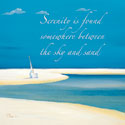

 Alan Hausenflock delved into digital photography in 2001, after being inspired by the work of Galen Rowell. Alan’s background in information technology, along with his passion for the medium, proved to be the perfect mix. His exquisite scenery shots capture the beauty of his home on the East Coast. As Gango Editions has expanded its photography and custom printing options, Hausenflock’s pieces have taken off – proving him to be one of our most popular photographers.
Alan Hausenflock delved into digital photography in 2001, after being inspired by the work of Galen Rowell. Alan’s background in information technology, along with his passion for the medium, proved to be the perfect mix. His exquisite scenery shots capture the beauty of his home on the East Coast. As Gango Editions has expanded its photography and custom printing options, Hausenflock’s pieces have taken off – proving him to be one of our most popular photographers.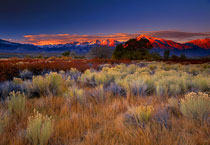 A: I was in a doctor’s office in 2000 and picked up a magazine and discovered a photo of the Owens Valley by Galen Rowell. (shown at right) I was mesmerized by it. My wife bought me a Kodak camera and I was off and running. After a few years of posting work on the internet, Robbin Allen of Gango Editions emailed me in April 2006 and asked if I’d be interested in being represented by Gango. I felt very fortunate. Then in August 2006, Nicole Chavez was assigned as my working contact at Gango. Since then my relationship with Gango Editions has matured into something that is hard working, creative, and beneficial to us both.
A: I was in a doctor’s office in 2000 and picked up a magazine and discovered a photo of the Owens Valley by Galen Rowell. (shown at right) I was mesmerized by it. My wife bought me a Kodak camera and I was off and running. After a few years of posting work on the internet, Robbin Allen of Gango Editions emailed me in April 2006 and asked if I’d be interested in being represented by Gango. I felt very fortunate. Then in August 2006, Nicole Chavez was assigned as my working contact at Gango. Since then my relationship with Gango Editions has matured into something that is hard working, creative, and beneficial to us both.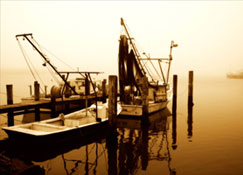
 A. I find that shooting something new will spur creativity. I also try to stretch past my comfort zone in subject matter, and that can sometimes have the same effect, and sometimes not. Other times I’ll go back to a previous shoot or even to finished work and try something I’ve just learned. Like anyone else, I get in a rut like “if I shoot one more tree, I’ll burn my camera”. The drive is there but I’ve got nowhere to go. When these dry spells occur I’ll start looking at all kinds of magazine imagery, new software, videos etc. Invariably I’ll get new ideas and new paths to follow. Feedback is very important to any photographer/artist, positive or negative. For me it’s like putting gas in my image car. The car is my technical skill with cameras, software etc. With a full tank I can drive the car wherever I have the inspiration to go. When I get to where I want to be, the work I produce generates more feedback by family and friends, and of course Gango. Feedback equals more (or sometimes less) gas for my image car and I hit the road again.
A. I find that shooting something new will spur creativity. I also try to stretch past my comfort zone in subject matter, and that can sometimes have the same effect, and sometimes not. Other times I’ll go back to a previous shoot or even to finished work and try something I’ve just learned. Like anyone else, I get in a rut like “if I shoot one more tree, I’ll burn my camera”. The drive is there but I’ve got nowhere to go. When these dry spells occur I’ll start looking at all kinds of magazine imagery, new software, videos etc. Invariably I’ll get new ideas and new paths to follow. Feedback is very important to any photographer/artist, positive or negative. For me it’s like putting gas in my image car. The car is my technical skill with cameras, software etc. With a full tank I can drive the car wherever I have the inspiration to go. When I get to where I want to be, the work I produce generates more feedback by family and friends, and of course Gango. Feedback equals more (or sometimes less) gas for my image car and I hit the road again.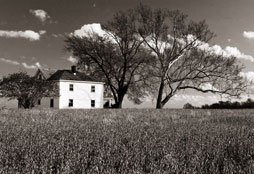
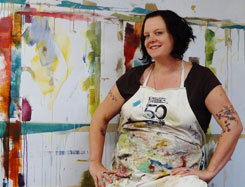 Jeni Lee grew up in the countryside of Northern California and the lush forests of the Northwest. She attended artist residencies on the Oregon coast, in New Mexico and in Vermont, and she received a BA in Painting. She quickly built a clientele base of private and corporate collectors. It was not long before her whimsical abstract pieces took fire in the mass market. Jeni is one of our best-selling artists and continues to bring new, creative pieces to the market.
Jeni Lee grew up in the countryside of Northern California and the lush forests of the Northwest. She attended artist residencies on the Oregon coast, in New Mexico and in Vermont, and she received a BA in Painting. She quickly built a clientele base of private and corporate collectors. It was not long before her whimsical abstract pieces took fire in the mass market. Jeni is one of our best-selling artists and continues to bring new, creative pieces to the market.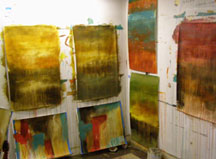 Q. How did you get on the path to becoming a professional artist?
Q. How did you get on the path to becoming a professional artist? 

 A. Before I go into the studio, I collect all my sketchbooks, design notes, pictures, and anything else that may inspire an artwork. I surround myself with those sources of inspiration, keep them stacked on the table next to my coffee, tack them up on the walls of the studio. Usually in the morning, I begin to sketch out ideas, and I think about what color palette I am inspired by, while considering composition and what materials would make an interesting piece. Then I start painting. I work intuitively and just let go and make art! That’s where the element of surprise and the essence of good art begins. As I move along, I use my skills and talents to refine my work into a more cohesive piece: Add a color here, change pattern here, and enhance a section there. It is a dance between me and the artwork, until at one moment, it is done. Perhaps my success is due to the fact that my audience can see this moment too, when an artwork is completed, it sings and visually pleases and inspires. I am incredibly grateful for that.
A. Before I go into the studio, I collect all my sketchbooks, design notes, pictures, and anything else that may inspire an artwork. I surround myself with those sources of inspiration, keep them stacked on the table next to my coffee, tack them up on the walls of the studio. Usually in the morning, I begin to sketch out ideas, and I think about what color palette I am inspired by, while considering composition and what materials would make an interesting piece. Then I start painting. I work intuitively and just let go and make art! That’s where the element of surprise and the essence of good art begins. As I move along, I use my skills and talents to refine my work into a more cohesive piece: Add a color here, change pattern here, and enhance a section there. It is a dance between me and the artwork, until at one moment, it is done. Perhaps my success is due to the fact that my audience can see this moment too, when an artwork is completed, it sings and visually pleases and inspires. I am incredibly grateful for that. Q. What are you working on now?
Q. What are you working on now? 